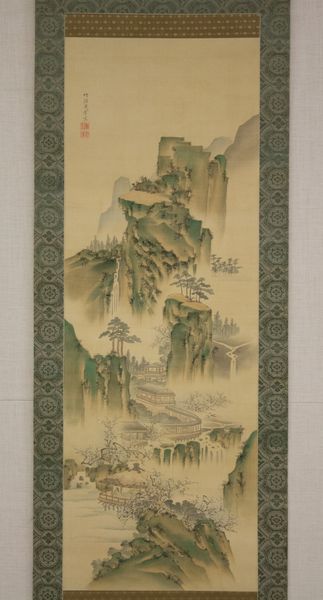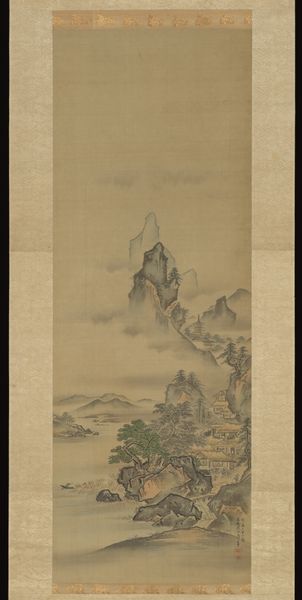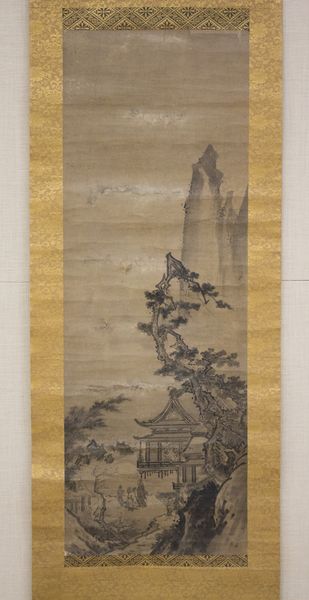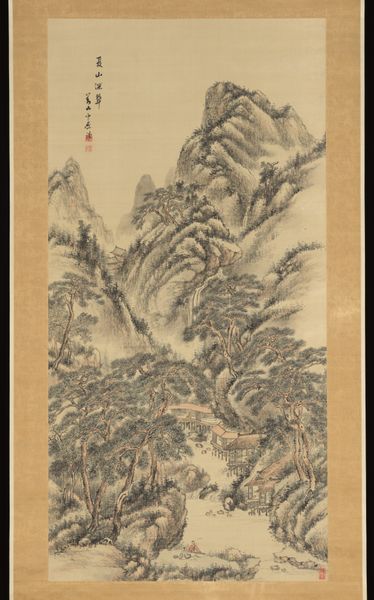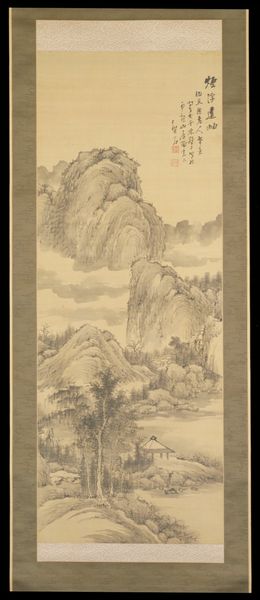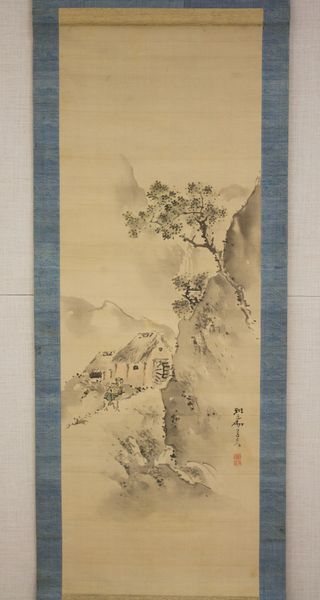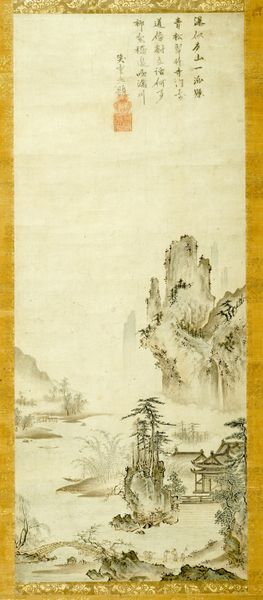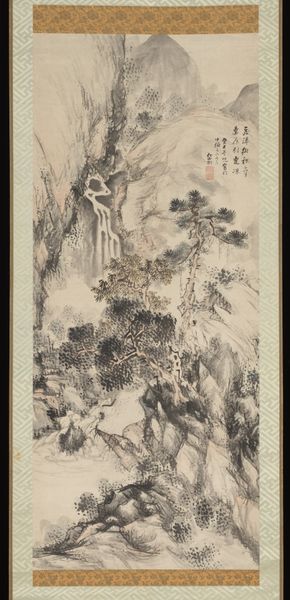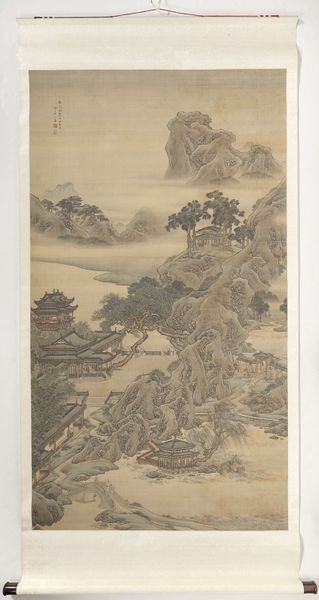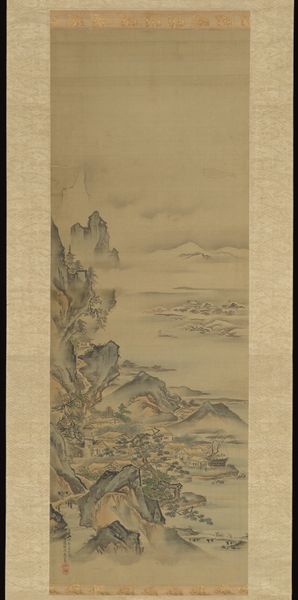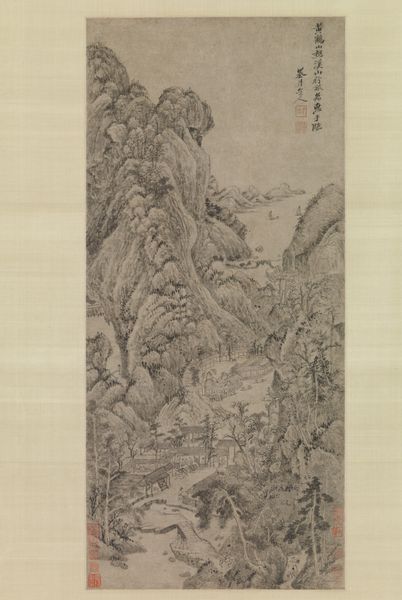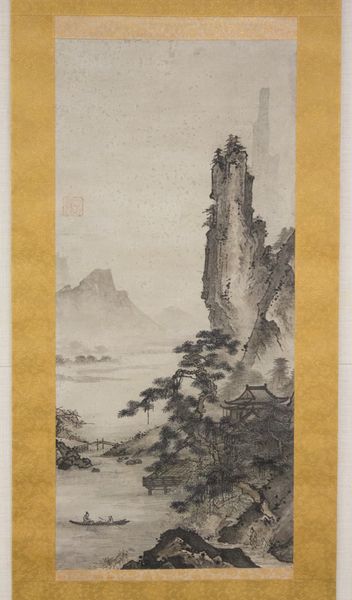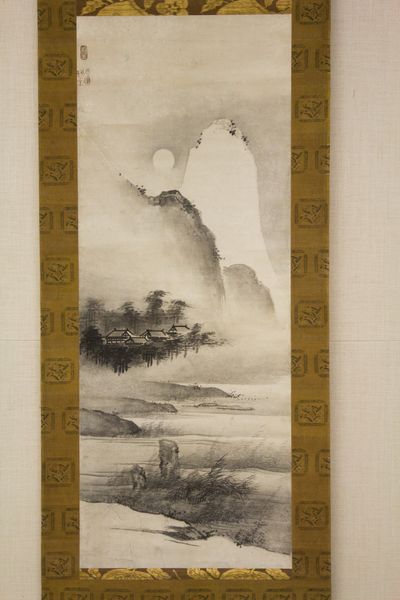
painting, watercolor, ink
#
ink painting
#
painting
#
asian-art
#
landscape
#
watercolor
#
ink
#
24_meiji-period-1868-1912
#
watercolor
Dimensions: Image: 49 1/4 × 16 3/16 in. (125.1 × 41.1 cm) Overall with mounting: 73 1/4 × 21 7/8 in. (186.1 × 55.6 cm) Overall with knobs: 73 1/4 × 24 in. (186.1 × 61 cm)
Copyright: Public Domain
Curator: What strikes you most immediately about this traditional landscape? Editor: The composition is incredible. The soaring mountains, the way the mist softens the peaks...it has a real sense of the sublime. Curator: Indeed. The artwork, known as "Landscape," is an ink and watercolor painting attributed to Kakuho, likely created during the Meiji period, sometime between 1875 and 1918. What is intriguing is the consumption of painting and mounting scrolls as cultural products within the artistic conventions and commercial markets of Meiji Japan. Editor: Speaking of form, observe how the artist employs washes of ink to delineate depth. The brushwork, especially in the rendering of the trees, creates textures that feel both grounded and ephemeral. It seems meticulously planned, using artistic license in a representational piece to explore his materials. Curator: It certainly directs us to examine painting not only as representation but as object – an object created by manual skill in very specific contexts and conditions of production. It raises questions about how traditional forms adapt and are commodified amidst societal shifts towards modernization. Editor: The mountains resonate beyond geographical features. I see symbolic pillars reaching for transcendence, while the soft gradations of color, balanced so precisely, generate an air of profound peace. Curator: Absolutely, the delicate interaction of the medium, the labor involved, the reception it might have received in its contemporary marketplace – they offer very pertinent commentaries on the dynamics within Japanese culture at this period. Editor: A beautiful work. Exploring the intersection between meticulous aesthetic sensibility and artistic object provides us new angles. Curator: Precisely, looking at art through the lens of how the artistic hand intersects material history broadens our appreciation of art-making itself.
Comments
No comments
Be the first to comment and join the conversation on the ultimate creative platform.
